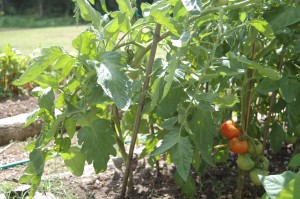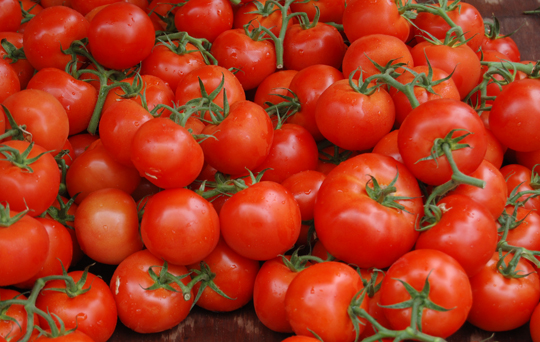Traditionally home grown tomatoes are produced from the heirloom varieties rather than hybrid tomatoes. So what is the difference between heirloom and hybrid tomatoes.
What are Hybrid Tomatoes?
 Hybrid tomatoes come from a mix of tomato plants i.e. they have 2 different types of parent tomato. The reason this is done is usually to try and create a hybrid tomato that has the best features of both the parent tomatoes. On a commercial basis that might be to prolong the shelf life of a tomato so that they can sit in the shops longer before starting to degrade or to perhaps make them a little more robust when handled.
Hybrid tomatoes come from a mix of tomato plants i.e. they have 2 different types of parent tomato. The reason this is done is usually to try and create a hybrid tomato that has the best features of both the parent tomatoes. On a commercial basis that might be to prolong the shelf life of a tomato so that they can sit in the shops longer before starting to degrade or to perhaps make them a little more robust when handled.
For home growing gardeners, the reason is more likely to be for a better flavour or to perhaps deal with season constraints in the location they are to be grown. A good example of this might be to try and produce a beefsteak tomato that matures and ripens early, so that they can still be produced in a short growing season region. That’s only ever likely to work if the overall result is a size reduction of some sort, because typically it is size that defines how long it takes for a tomato to ripen.
F1 seeds are produced by means of a controlled pollination which needs to be repeated each season for reproduction. This is a manual process which involves taking a male flower off one plant and rubbing the pollen into a female flower on another plant. Then when the fruit is produced and ripens you have to save the seeds for planting the following season.
Sometimes you will see hybrid plants labelled F2, this means that these plants have been produced through the cross pollination of F1 varieties. The fruit from an F2 hybrid will be less consistent than from a F1 variety, so if you want to know exactly what you will be getting its probably better to stick to F1’s.
It’s worth noting that taking the seeds from a hybrid plant is highly likely to end in a failed crop. This is because more often than not the seeds produced in hybrids are sterile or the plants produced do not retain the characteristics of the parent hybrid plant. So they could be completely tasteless for example. As a general rule of thumb nearly everyone adopts the assumption that you cannot grow new plants from F1 or F2 seeds.
What are Heirloom Tomatoes?
Heirloom tomatoes are generally accepted to be open pollinated varieties i.e. if the seeds from the plant are saved they can be grown again the following year with the same characteristics, and this applies year on year. In fact many people will say that an heirloom is not an heirloom until it has been produced for 50 years or more. You can decide if you agree with that statement or not.
The final point which relates to whether a tomato is an heirloom or not, is whether its history can be traced. Ideally this will be back to the original production of the plant saying when and where it was first grown.
The main benefit of heirloom varieties is that you know exactly what you are going to get, provided you treat the plants the same way each year. So if you find a flavour, texture or size that flourishes in your region and produces enough fruit through your growing season, then you will be able to reproduce them consistently each year. Although that might be a bit boring and mixing things up a little might be a bit more fun.


